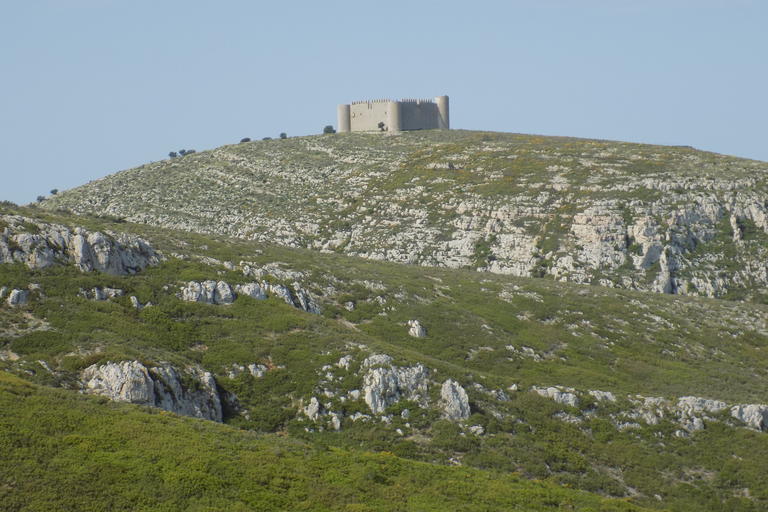
Introduction
You are on a secondary peak with a height of 267 m.
The Montgrí Massif, much of which can be seen from where you are, is, geologically speaking, a large outcrop of carbonate rock caused by a series of faults running from east to west. Evidently, this growth took place long ago, long enough for the current appearance of the mountain to be the result of general erosion and karstic processes, in other words, the formation of sinkholes, caves and fissures. The Cau del Duc mentioned above and the Cova dels Óssos are especially worth noting among these, although there are several more.
The mountains increase in height from north to south, where their highest peaks are, two of which you have already done: Montgrí itself, with the castle, and Montplà. Just behind this first ridge is the valley of Santa Caterina and, following its alignment, the area of les Maures, with the Torre Moratxa and Roca Maura, points which are close to the coastal town of l'Estartit. Out to sea, the Medes Islands are the most easterly extension of these mountains. To the north is the secondary ridge which descends almost all the way to Bellcaire d’Empordà, where you currently are, and which separates the valley of Santa Caterina from the plain of the old lake of Bellcaire, which you will walk through later. Further to the north-east is the high plain of the Muntanya Gran, which extends as far as Cala Montgó at between 100 and 150 m in height, approximately. The coastal area, from the beach of Riells de l’Escala to l'Estartit, is a series of abrupt cliffs cut through in points by gullies that lead to small hidden coves.
The flatter area between Montplà and Torre Moratxa is actually a group of inland sand dunes comprising sand from the gulf of Roses which are now covered by extensive pine groves as a result of stabilisation work in the late nineteenth and early twentieth centuries. These dunes extend from the Coll de les Sorres almost all the way to the first developments of l’Escala.